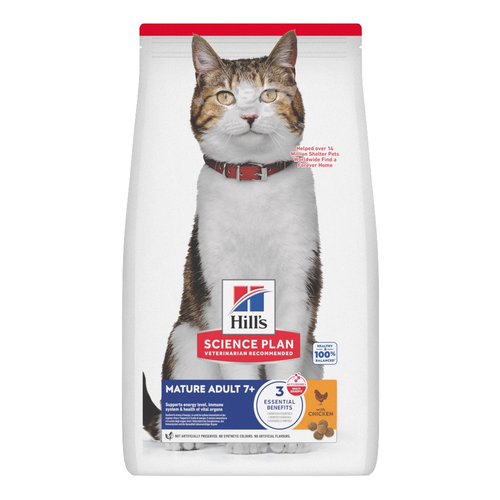
-
Find the right food for your petTake this quiz to see which food may be the best for your furry friend.Find the right food for your petTake this quiz to see which food may be the best for your furry friend.Featured products
 Perfect Digestion Large Breed Puppy Food
Perfect Digestion Large Breed Puppy FoodPrecisely balanced nutrition with Hill's ActivBiome+ prebiotic blend actively contributes to supporting digestive health and overall wellbeing to help your pet feel their best
Shop Now Large Breed Adult Dog Food
Large Breed Adult Dog FoodHill's Science Plan Large Breed Adult Dog Food with Lamb & Rice is a complete pet food, specially formulated with ActivBiome+ Multi-Benefit Technology.
This food is specifically designed to fuel the energy needs of large breed dogs during the prime of their life.Shop Now Adult Light Dog Food
Adult Light Dog FoodHill's Science Plan Light Adult Wet Dog Food is a complete premium pet food for adult dogs that tend to gain weight easily. This deliciously smooth loaf is formulated to deliver the appropriate amount of energy to support weight maintenance in adult dogs.
Shop NowFeatured products Sterilised Adult Cat Food
Sterilised Adult Cat FoodHill's Science Plan Adult Sterilised Cat Dry Food with Salmon is specially formulated with ActivBiome+ Multi-Benefit Technology. It is a precisely balanced nutrition, tailored to meet the needs of sterilised cats, to help keep sthem lean & healthy.
Shop Now CULINARY CREATIONS ADULT CAT FOOD
CULINARY CREATIONS ADULT CAT FOODHill's Science Plan CULINARY CREATIONS Adult cat food with Salmon & Carrots was formulated to provide a great-tasting experience to cats. Its delicious flavour and texture are combine with essential nutrients to support cats' optimal health during the prime time of their life. Specially formulated with high-quality salmon protein, essential taurine for heart health & balanced minerals to support kidneys & bladder.
Shop Now Adult Cat Food
Adult Cat FoodHill's Science Plan Adult Cat Food with Chicken is a complete pet food, specially formulated with ActivBiome+ Multi-Benefit Technology.
This food is specially formulated to fuel the energy needs of cats during the prime of their life.Shop Now -
Dog
- Dog Tips & Articles
-
Health Category
- Weight
- Food & Environmental Sensitivities
- Urinary
- Digestive
- Joint
- Kidney
-
Life Stage
- Puppy Nutrition
- Adult Nutrition
- Senior Nutrition
Cat- Cat Tips & Articles
-
Health Category
- Weight
- Skin & Food Sensitivities
- Urinary
- Digestive
- Kidney
-
Life Stage
- Kitten Nutrition
- Adult Nutrition
Featured articles The Incredible Science Behind Your Pet's Microbiome
The Incredible Science Behind Your Pet's MicrobiomeLearn what your pet's microbiome is, how it contributes to your pet's gut and overall health, and why nutrition is important in maintaining healthy microbiomes.
Read More Pet Nutrition: What Makes "Healthy" Pet Food Healthy? | Hill's Pet
Pet Nutrition: What Makes "Healthy" Pet Food Healthy? | Hill's PetIn people, the right diet is very important. If you are eating the wrong way for your metabolism, activity level, age and lifestyle you could end up with health issues.
Read More Microchipping: The Facts | Hill's Pet
Microchipping: The Facts | Hill's PetThe government has announced that as of April 2016, all dogs in the UK must be microchipped by law.
Read More -


You know the biological differences between male and female cats, but you may wonder if one sex is better than the other when it comes to picking a new furry friend to join your family. Exploring the contrasts between strutting toms and purring queens may help you choose a cat that better fits your lifestyle and personality. So, should you get a male or a female cat? Let's first explore the difference between male and female cats.
Which Sex Is Better Behaved?
Behavioural differences between male and female cats are most obvious in cats that are not neutered or spayed, since the behavioural differences are usually related to the cat's hormones. For example, male cats may become more aggressive, spray urine and try to escape the house when they are in their sexually mature stage. However, female cats in heat can become more affectionate, tend to rub against almost everything, and can also become more vocal. Although the majority of intact (non-neutered or spayed) cats have very distinctive behaviours, there is no consensus that all cats of either sex act a certain way. Some female cats spray while in heat, while some male cats have been known to be more affectionate. Most adoption centres strongly encourage pet parents to spay and neuter their cats. Kittens are definitely cute but you should discuss if spaying or neutering is right for your pet before you end up with a new litter of kittens.
People often assume certain personality traits in cats based on things like breed or coat colour, as found in a survey by the University of California Davis Veterinary Medical Teaching Hospital. People characterised orange cats as more friendly, for example, and black or white cats were considered more antisocial. However, most cat owners and vets will tell you that choosing a cat based on sex or colour won't guarantee you will get a cuddly kitty or an independent cat. The environment a cat is raised in and the personality of the pet parent can often influence behaviour more than genetics will.



Tasty Tips
A+ for Appearance
Cat breeds are often harder to distinguish than dog breeds. Your future cat could have a mix of traits, a distinctive colour, and a long or short coat. Like most mammals, male cats of any breed tend to be a little larger in size than their female counterparts. However, in general terms, both male and female cats tend to weigh between 2.5-5.5 kilograms and stand about 20 to 25 cm high. The type of food you feed your cat, the amount of exercise they get, and their overall health will have a great effect on their appearance.
Choosing a cat solely on appearance isn't ideal. If you are looking to bring a new cat into your home, visit an adoption centre such as the Blue Cross that has a wide variety of cat ages, breeds and personalities. Many centres offer a web page with pictures of cats you can peruse before visiting, and shelter staff can give you insight into the cat's background. When meeting a cat for the first time, sit near the cat and wait for him or her to come to you. Let the cat rub and bump against you for a little before making contact. And always allow yourself some time with several different cats before making a final decision.
Should I Get a Male or Female Cat?
The truth is that the sex of the cat really doesn't matter when it comes to choosing the purrfect pet for you. Although there are some behavioural differences between male and female cats as they grow from kittens to adults, a cat's genetics and environment play a bigger role in how well the two of you will bond. So take the time to meet a few cats and pick the one that you think will be your best friend. Male and female cat differences should only play a small role in choosing a cat.


Chrissie Klinger is an educator, writer and mother of two children, three dogs and three cats. Her dog Jake loves sitting on her lap every chance he gets! She enjoys living an active and eco-friendly lifestyle in rural Pennsylvania.
Related products

Hill's Science Plan CULINARY CREATIONS Adult cat food with Salmon & Carrots was formulated to provide a great-tasting experience to cats. Its delicious flavour and texture are combine with essential nutrients to support cats' optimal health during the prime time of their life. Specially formulated with high-quality salmon protein, essential taurine for heart health & balanced minerals to support kidneys & bladder.

Hill's Science Plan Adult Cat Food with Chicken is a complete pet food, specially formulated with ActivBiome+ Multi-Benefit Technology.
This food is specially formulated to fuel the energy needs of cats during the prime of their life.

Hill's Science Plan Mature Adult Cat Food with Chicken is a complete pet food, specially formulated with ActivBiome+ Multi-Benefit Technology.
This food supports graceful aging in cats, providing a synergistic ingredient blend to help support energy & activity levels.

Hill's Science Plan Adult Sterilised Cat Dry Food with Salmon is specially formulated with ActivBiome+ Multi-Benefit Technology. It is a precisely balanced nutrition, tailored to meet the needs of sterilised cats, to help keep sthem lean & healthy.
Related articles

Understand common skin issues in cats and how to manage them effectively. Learn signs and prevention, and get care tips. Find out more at Hill's Pet.

Learn about the causes of cat dermatitis, how to spot the symptoms and the best treatment options. Visit Hill's Pet for detailed guidance and tips.

Learn how your cat's poo can be a good indicator of her overall health, including how to spot unhealthy or abnormal cat poop and what it might mean.

Cats with sensitive skin have special needs and even healthy cats can sometimes develop poor skin health. Learn more about sensitive skin symptoms in your cat, what you can do to help your pet feel more comfortable and get recommendations on sensitive skin cat food.

Put your cat on a diet without them knowing
Our low calorie formula helps you control your cat's weight. It's packed with high-quality protein for building lean muscles, and made with purposeful ingredients for a flavourful, nutritious meal. Clinically proven antioxidants, Vitamin C+E, help promote a healthy immune system.
Put your cat on a diet without them knowing
Our low calorie formula helps you control your cat's weight. It's packed with high-quality protein for building lean muscles, and made with purposeful ingredients for a flavourful, nutritious meal. Clinically proven antioxidants, Vitamin C+E, help promote a healthy immune system.

